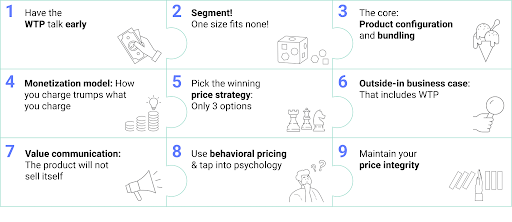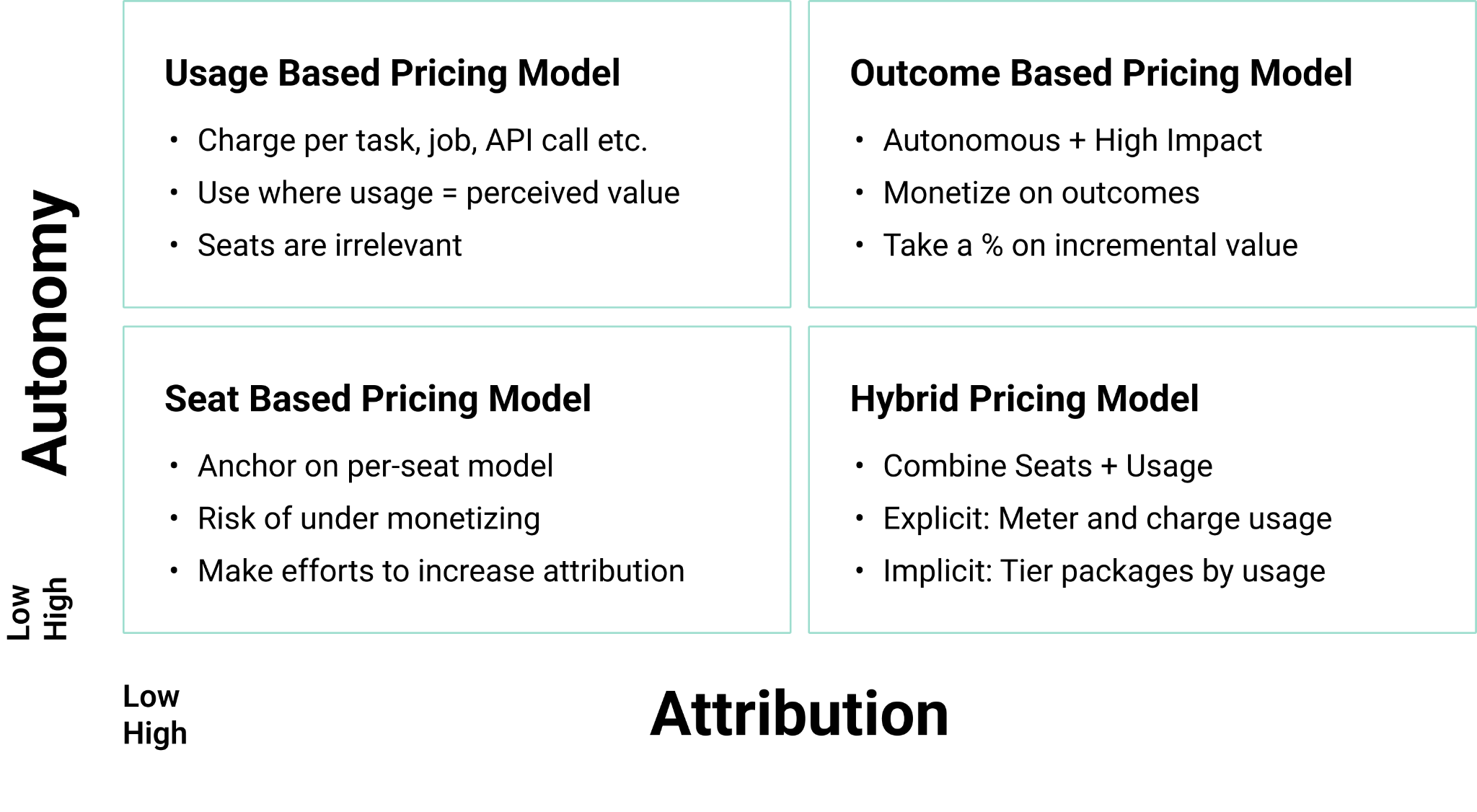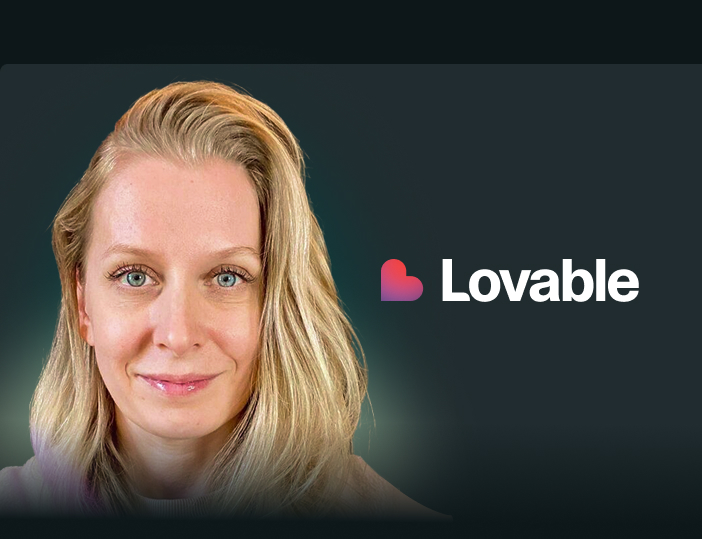Share
In a world where AI is accelerating product cycles and shifting customer expectations, how your company prices and monetizes isn’t just a detail—it’s existential.
In a recent webinar hosted by Metronome, CEO Scott Woody sat down with Madhavan Ramanujam and Joshua Bloom, pricing experts and general partners at 49 Palms Ventures, to talk about two frameworks that every company should be using to get monetization right from the start.
Whether you're building an AI startup or scaling a SaaS product, these frameworks can help you avoid the biggest pitfalls in pricing—and build a business that captures its fair share of the value it creates.
These are the two core frameworks Madhavan and Joshua shared. We’ll go into why they matter and what you should do about them.
The 9-step framework for monetizing innovation
Pricing isn't just about maximizing revenue. It's about ensuring you build a product people will pay for from day one. That’s the thesis behind this framework from Madhavan’s first book, Monetizing Innovation. Below is a high-level breakdown of the framework. Catch the full, in-depth walkthrough in the replay.

1. Willingness-to-pay conversations first
Before building, you must validate that customers *would* pay for what you’re proposing — and at what price. Without this, you risk developing a product no one values enough to buy.
Action item: Conduct willingness-to-pay interviews using scenarios, not hypotheticals. Why? Honest feedback about paying behavior reveals true demand, not just surface-level interest.
- Use prototypes, mock-ups, or blueprints.
- Frame conversations around *situational* value, not open-ended pricing questions.
2. Designing around monetization
Once you know what people will pay for, design your product roadmap around it. Don't treat pricing as something separate from what you build. As Madhavan mentions, designing around willingness to pay is crucial if you want to avoid building ‘undead’ products—ones that are dead on arrival.
Action item: Define the revenue model alongside the feature set. Why? Products should be engineered to hit price points that customers accept—not built first and priced later.
- Ask: "Would customers pay $X if we included A, B, and C?"
- Build only what moves the customer meaningfully toward higher willingness-to-pay.
3. Concept testing with price sensitivity
Prototype tests should have the goal of validating price elasticity. Test multiple versions with different price points to understand trade-offs. For example, you might offer a basic version at $100 and a premium version at $300. In tests like this, you can expect noticeable shifts in customer preferences.
Action item: Present customers with multiple versions of your product at different price points. Why? It’s a forcing mechanism that results in customers revealing their implicit thresholds and value calculations.
4. Pricing and packaging for segments
Different customer segments have different needs and different willingness to pay. Instead of creating one-size-fits-all solutions, productize for segments from the start. “You need to develop this mentality of designing the product around customer willingness to pay—productizing to a price point, as opposed to trying to price your products” Madhavan says. You can design “good-better-best” tiered options mapped to usage or value tiers.
Action item: Build segment-specific bundles or SKUs. Why? Clear segmentation maximizes revenue without alienating smaller buyers.
5. Early monetization decisions
Don’t kick monetization decisions down the road. Early sales conversations should involve value positioning and price framing alongside product education. One thing to note is that "free forever" pilots aren’t generally a good idea—unless they’re tied to clear upgrade paths and pricing discussions.
Action item: Train sales early to sell value, not just features. Why? Pricing discipline needs to start with your first beta customers, or it will be hard to establish later.
6. Managing monetization risk
Pricing always involves risk: setting prices too high and losing volume, or setting prices too low and losing margin. Smart companies manage monetization risk through iteration, versioning, and testing. Consider it your new rule to test new monetization approaches with lighthouse accounts before full rollout.
Action item: Pilot new pricing models with small customer subsets. Why? Testing reduces guesswork and lets you optimize with minimal downside.
7. Productizing the willingness to pay
It's not enough to know someone might pay. You need to present structured, productized offerings that customers can actually buy. For example, you don’t want to include enterprise features in starter plans. There’s a significant misalignment there, which doesn’t maximize the features’ monetization opportunity.
Action item: Align your feature sets cleanly with willingness-to-pay tiers. Why? Packaging directly affects perceived value and customer upgrade paths.
8. Enabling monetization infrastructure
You can’t monetize innovation if your systems can’t support flexible billing, packaging changes, or rapid price iterations. Choose systems that allow per-customer SKUs, pricing experiments, and metered billing. Staying competitive means staying nimble.
Action item: Invest early in billing and pricing flexibility. Why? Agility is crucial—especially in AI and usage-driven businesses where pricing must adapt fast.
9. Institutionalizing monetization
“The final step is maintaining your pricing integrity after you launch your products.” *(5:26), says Madhavan. Monetization isn't a project—it’s a cross-functional discipline. Leaders must embed pricing into product development, sales training, customer success, and finance. To keep pricing in your company’s top priorities, make it a recurring topic in leadership reviews, and educate every function (not just sales) on how their work touches pricing.
Action item: Appoint a pricing committee or clear owner. Why? Without accountability, pricing decisions will drift or become ad hoc, hurting revenue and customer trust.
The AI monetization 2x2: Autonomy vs. attribution
Traditional pricing models are showing their age while AI is busy reshaping software and pricing. Another framework Madhavan and Joshua shared is a simple and powerful two-by-two that can help you price AI-native products better. “The best way to break down this market is to think along two dimensions: autonomy and attribution,” says Joshua.

- Autonomy: How independently can your AI accomplish tasks?
- Attribution: How clearly can you tie outcomes to business value?
Products in different quadrants of this framework require distinct pricing approaches. Depending on where your product falls, your pricing strategy should align with the best-fit strategy outlined in the framework.
High autonomy + high attribution → Outcome-based pricing
If your product acts independently and you can tie its work directly to revenue or cost savings, you’re in outcome-pricing territory. Think AI managing manufacturing lines, optimizing ad spend, or preventing fraud—anything where clear business value is created automatically. Charge a share of savings, incremental revenue, or direct financial impact, and use pilots or proofs of concept to document the value early.
Action item: Build a pricing model that charges for the business outcomes you drive. Why? You unlock much larger budgets tied to P&L impact with this approach, not just headcount.
High autonomy + low attribution → Usage-based pricing
If your product acts independently but the value is harder to quantify precisely (think: autonomous coding tools, AI middleware), usage-based pricing is the way to go. As Joshua notes, “Seats might be irrelevant here—you charge by task, job, or usage.” Metrics like ‘lines of code generated’ or ‘alerts resolved’ can make good usage anchors. It’s best to keep units simple, intuitive, and ideally elastic with customer growth.
Action item: Define clear usage units tied to meaningful customer activity. Why? Usage is the best proxy for value when direct attribution isn’t clean.
Low autonomy + high attribution → Hybrid pricing
In cases where humans are still heavily involved, but the AI creates measurable value (like healthcare claims processing with partial automation), a hybrid model makes the most sense. You might charge per seat for the human-assisted workflows and per task for fully automated ones.
Action item: Mix pricing models across different product layers. Why? It maximizes revenue while matching how customers experience value.
Low autonomy + low attribution → Seat-based pricing
This is where traditional SaaS still lives. Tools where most of the heavy lifting is human, and value is loosely tied to productivity. But even here, Joshua warned: be ready to move. “Seat-based models aren’t dead—but they’ll feel increasingly outdated as AI evolves.”
Here, you’ll anchor seats around user productivity (e.g., seats for analysts, seats for support agents). Build instrumentation into the product now to track usage and outcomes invisibly, even if you don’t charge for them yet, and revisit your packaging every 12–18 months to see if outcome or usage-based extensions make sense.
Action item: Start with seats, but plan for migration. Why? Customers expect pricing evolution as products get smarter.
tl;dr: Pricing is product strategy—especially in AI.
Whether you're following the 9-step blueprint for monetizing innovation or applying the AI autonomy–attribution matrix, the key idea is the same: monetization is a design question, not just a revenue question.
Here’s what to remember:
- If you’re not testing willingness to pay, you’re not validating your product.
- Build product plans around price points—not the other way around.
- Align your pricing model to how your AI delivers value—not to legacy SaaS habits.
- Treat your first deals like pricing culture-setting moments.
- Own pricing as a leadership-level discipline from day one.
Want to go deeper?
- Watch the webinar replay to catch the full conversation: Monetizing AI: Getting it right as a startup.
- Read Monetizing Innovation and pre-order the follow-up, Scaling Innovation—the new blueprint for building enduring, profitable businesses.












